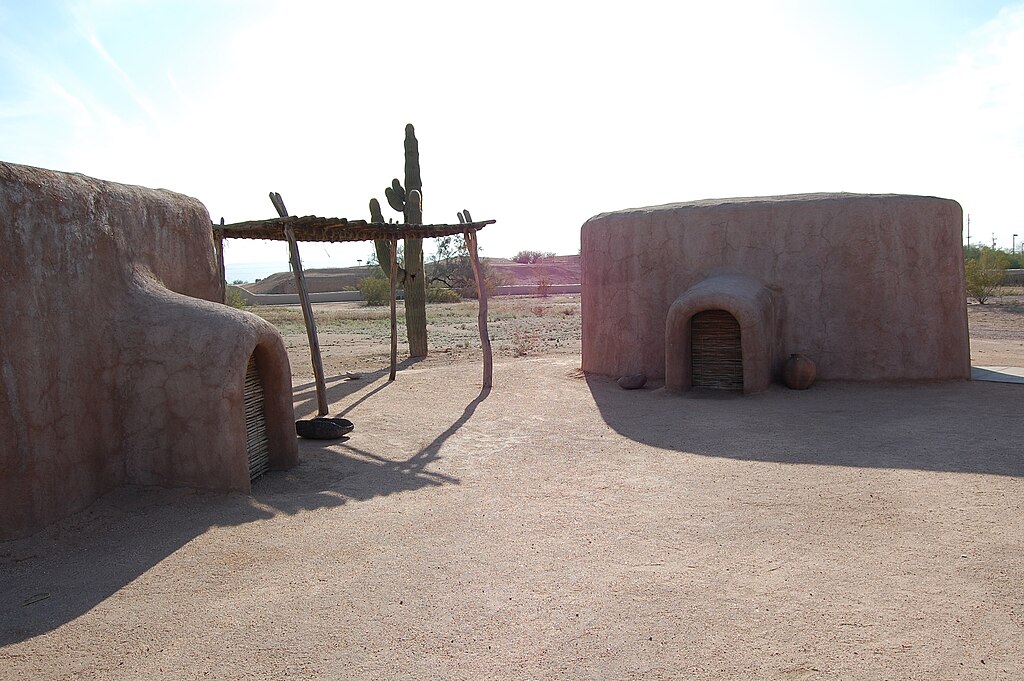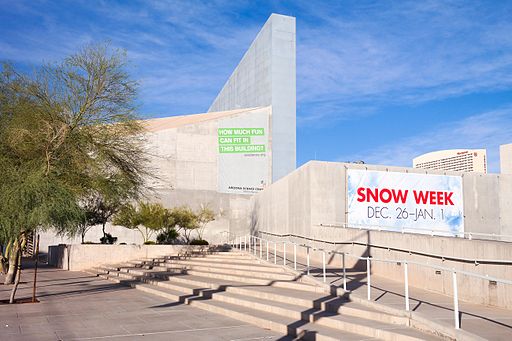
“The Yellow House” by Vincent van Gogh depicts the building and surrounds where Van Gogh rented four rooms in May 1888.
Van Gogh rented two large rooms on the ground floor, one which served as his workshop and the other as the kitchen.
He also occupied two smaller rooms on the first floor, which acted as bedrooms facing Place Lamartine.
The window on the first floor near the corner with both shutters open is that of Van Gogh’s guest room, where Paul Gauguin lived for nine weeks from late October 1888.
Behind the next window, with one shutter closed, is Van Gogh’s bedroom. The house was the right-wing of 2 Place Lamartine, Arles, France.
The Yellow House itself no longer exists. It was damaged in a bombing raid by the Allies in 1944 and was later demolished.
The Yellow House
The “Yellow House” is famous in Van Gogh’s story because of the art he created to help decorate his house and because it was the time of his significant artistic breakthroughs.
Van Gogh wanted to furnish and decorate the Yellow House before he could fully move in, but he was able first to use it first as a studio.
The paintings that he created for the decoration of the rooms in the “Yellow House” included some of his most famous artworks:
- Bedroom in Arles
- The Night Café
- Cafe Terrace at Night
- Starry Night Over the Rhone
- Still Life: Vase with Sunflowers
- Van Gogh’s Chair
- Gauguin’s Chair
The Yellow House is also remembered as the place where he argued with Gauguin and the events which led to Van Gogh’s mutilation of his ear.
“The Street” by Vincent van Gogh
Initially, Van Gogh titled the painting as “The House and its environment.” Later he changed it to “The Street,” paying homage to a suite of sketches showing streets in Paris, recently published in Le Figaro.
To the right of the Yellow House, the Avenue Montmajour runs down to the two railway bridges.
The first bridge line, showing a train passing, was the local connection to Lunel, which is on the right bank of river Rhône. The second bridge serviced the Paris Lyon Méditerranée train line.
In the left foreground corner is the beginning of the public gardens on Place Lamartine with a pedestrian walk protected by the earthworks.
The earthworks running up Avenue Montmajour from the left towards the bridges served the gas pipe, which allowed Van Gogh to have installed a gaslight for his art studio.
The restaurant where Van Gogh used to have his meals was in the building painted pink close to the left edge of the painting.
Vincent van Gogh Sketch and Description
The painting was executed in September 1888, at which time Van Gogh sent a sketch of the composition to his brother Theo plus a description.
‘Also a sketch of a 30 square canvas representing the house and its setting under a sulfur sun under a pure cobalt sky. The theme is a hard one! But that is exactly why I want to conquer it. Because it is fantastic, these yellow houses in the sun and also the incomparable freshness of the blue. All the ground is yellow too. I will soon send you a better drawing of it than this sketch out of my head.”

The Yellow House at Arles and letter by Vincent van Gogh
This painting never left Vincent van Gogh’s family. It is now in possession of the Vincent van Gogh Foundation and on permanent loan to the Van Gogh Museum, Amsterdam.
The Yellow House
- Title: The Yellow House
- Dutch: Het gele huis
- Also: The Street (Dutch: De straat)
- Previous title: The House and its environment (French: La Maison et son entourage)
- Artist: Vincent van Gogh
- Nationality: Dutch
- Year: September 1888
- Location: Arles
- Medium: Oil on canvas
- Dimensions Height: 72 cm (28.3 in); Width: 91.5 cm (36 in)
- Movement: post-Impressionist
- Museum: Van Gogh Museum
Vincent van Gogh – The Yellow House
Vincent van Gogh
Vincent Willem van Gogh is among the most famous and influential figures in the history of Western art. Van Gogh was unsuccessful during his lifetime and was considered a madman and a failure.
He created about 2,100 artworks, including around 860 oil paintings, most of them in the last two years of his life.
They were characterized by bold colors and dramatic, impulsive, and expressive brushwork that contributed to the foundations of modern art.
Vincent van Gogh
- Name: Vincent Willem van Gogh
- Born: 1853 – Zundert, Netherlands
- Died: 1890 (aged 37) – Auvers-Sur-Oise, France
- Resting place: Cimetière d’Auvers-Sur-Oise, Auvers-Sur-Oise, France
- Nationality: Dutch
- Movement: Post-Impressionism
- Notable works:
- Starry Night
- Starry Night Over the Rhône
- Sunflowers
- Irises (Getty Museum)
- Self Portrait, dedicated to Paul Gauguin
- Portrait of the Postman Joseph Roulin
- White House at Night
- The Night Café
- Self-Portrait as a Painter
- Self Portrait with Felt Hat
- Green Wheat Field with Cypress
- The Raising of Lazarus
- Self-Portrait Mutilated Ear
- Café Terrace at Night
- Tarascon Stagecoach
- Wheatfield with Crows
- Bedroom in Arles
- Portrait of the Artist’s Mother
- Vase with Red Poppies
- Memory of the Garden at Etten
- Great Peacock Moth
- Farmhouse in Provence
- Agostina Segatori Sitting in the Café du Tambourin
- Fishing Boats on the Beach at Saintes-Maries
- Seascape at Saintes-Maries
- Girl in White
- Young Peasant Woman with Straw Hat Sitting in the Wheat
- Van Gogh’s Chair
- Gauguin’s Chair
- Saint-Rémy – Road with Cypress and Star
- Almond Blossoms
- The Church at Auvers
- The Yellow House
Vincent van Gogh’s Drawing of ‘The Yellow House.’
What was it like to live inside Vincent Van Gogh’s Yellow House?
A Virtual Tour of the Van Gogh Museum
- “Self-Portrait as a Painter” by Vincent van Gogh
- “Self Portrait with Felt Hat” by Vincent van Gogh
- The Raising of Lazarus (after Rembrandt) by Vincent van Gogh
- “Wheatfield with Crows” by Vincent van Gogh
- “Bedroom in Arles” by Vincent van Gogh
- “Great Peacock Moth” by Vincent van Gogh
- “Fishing Boats on the Beach at Saintes-Maries” by Vincent van Gogh
- “Fishing Boats at Saintes-Maries” by Vincent van Gogh
- “Agostina Segatori Sitting in the Café du Tambourin” by Vincent van Gogh
- “Portrait of Vincent van Gogh” by Henri de Toulouse-Lautrec
- “Gauguin’s Chair” by Vincent van Gogh – Van Gogh Museum
- “Almond Blossoms” by Vincent van Gogh
The Yellow House by Vincent Van Gogh
~~~
“The best way to know God is to love many things.”
– Vincent van Gogh
~~~
Photo Credit: 1) Vincent van Gogh [Public domain], via Wikimedia Commons; Wapakk / CC BY-SA (creativecommons.org/licenses/by-sa/4.0); Héric SAMSON / CC BY-SA (creativecommons.org/licenses/by-sa/3.0)
Top Posts & Pages








 Sponsor your Favorite Page
Sponsor your Favorite Page SEARCH Search for: Search Follow UsJoin – The JOM Membership Program
Become a Patron!
Sponsor a Masterpiece with YOUR NAME CHOICE for $5
Share this:
- Tweet
